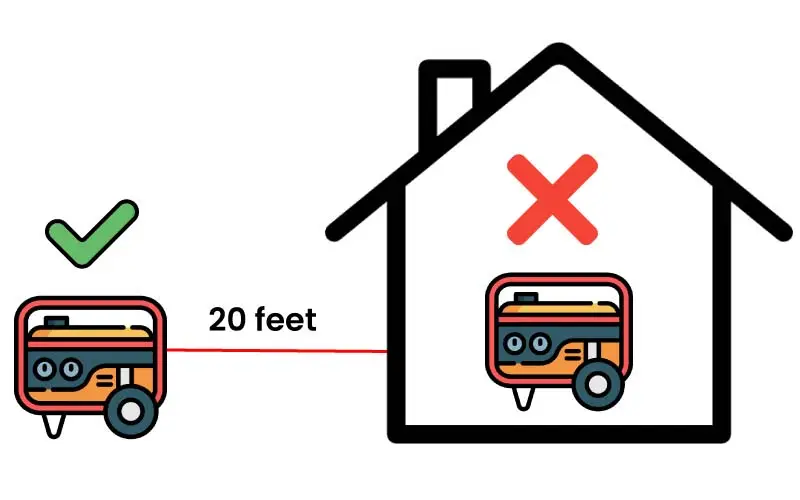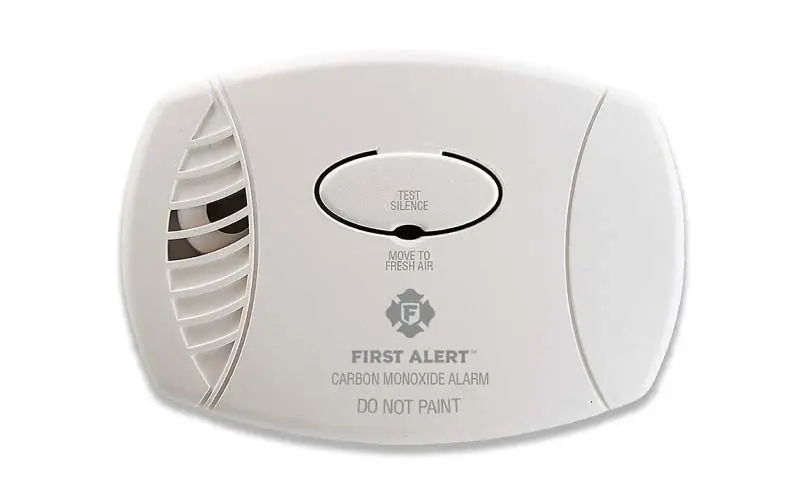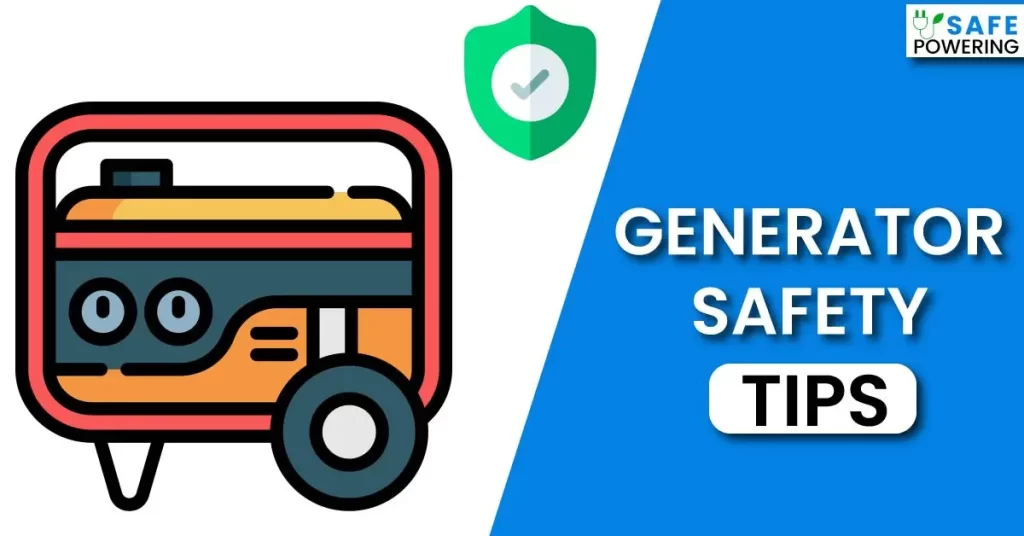Stay Safe and Powered: Generator Safety Tips for Homeowners
Don’t let a lack of knowledge put you at risk when using a generator. Check out these essential generator safety tips to stay protected
Generator safety is of utmost importance for anyone who uses these powerful machines. While generators can be incredibly useful in situations where you need backup power, they can also be dangerous if not handled correctly.
Just remember what happened on January 8, 2022, in Murree, Pakistan where at least 22 people died due to carbon monoxide poisoning.
As a safety expert on the topic, I’m here to share with you some essential tips to ensure that you can use your generator safely and effectively.
So if you want to avoid potential hazards and keep yourself and your loved ones safe, read on to learn more about generator safety tips.
What Happened On January 8, 2022, In Murree, Pakistan?
On January 8, 2022, Murree, a popular tourist destination in Pakistan, was hit by a severe snowstorm, leading to the closure of roads and causing widespread power outages.
Many residents and tourists relied on generators to power their homes and hotels during this time, which unfortunately led to a tragic incident of carbon monoxide poisoning.
As the snowstorm continued to rage outside, many people inside the buildings were unaware that the exhaust from their generators was filling the enclosed spaces with toxic carbon monoxide gas.
Tragically, several people lost their lives to this silent killer, as they were unable to detect the odorless and colorless gas in time.
Emergency services were alerted, and several people were rushed to hospitals for treatment, but unfortunately, many were already beyond help. This tragic incident serves as a reminder of the importance of proper generator safety measures, especially during emergencies or power outages, to prevent such incidents from occurring in the future.
5 Generator Safety Tips
The tragic incident in Murree highlights the importance of proper generator safety measures, especially during emergencies or power outages. Here are some essential tips to keep in mind
1. Use Generators Outdoors

When using a generator, it is essential to place it outdoors in a well-ventilated area.
This means that it should be located at least 20 feet away from any doors, windows, or vents to prevent CO from entering the home or building. Never use the generator inside a garage or living room.
Running a generator indoors or in an enclosed space can quickly lead to a buildup of carbon monoxide, which can cause asphyxiation and death.
Recommended Read: How Far Should Generator Be From The House?
2. Use CO Detectors

Installing carbon monoxide detectors in your home or hotel is crucial to alert you to the presence of CO gas.
It is essential to check the batteries regularly and replace them as needed to ensure the detector is working correctly.
In the event of a CO leak, the detector will sound an alarm, allowing you to evacuate the building and call emergency services.
3. Turn Off the Generator Before Refueling
When refueling a generator, it is essential to turn it off and allow it to cool down first. Spilled fuel can ignite and cause a fire or explosion, which can be especially dangerous in an enclosed space.
Always use caution when refueling a generator and ensure that the fuel source is stored safely away from the generator.
4. Be Aware of The Symptoms of CO Poisoning
Symptoms of CO poisoning include headache, dizziness, nausea, confusion, and weakness.
These symptoms can be easily mistaken for flu-like symptoms, which can delay the detection of a CO leak. It is essential to be aware of these symptoms and seek medical attention immediately if you or anyone in your home or hotel experiences them.
5. Follow the Manufacturer’s Instructions
Each generator has a unique set of manufacturer’s instructions that should be carefully followed to ensure safe operation.
These instructions will provide guidance on proper usage, maintenance, and safety measures. Overloading a generator or using it for purposes other than what it is intended for can be dangerous and increase the risk of CO poisoning.
Expert Tips for Generator Safety

Proper Ventilation for Carbon Monoxide
To reduce the risk of carbon monoxide poisoning, it is essential to ensure proper ventilation when operating a generator.
Here are some tips for proper ventilation when using a generator:
Generator Safety Tips for Gasoline and Burns
- Gasoline is an extremely flammable, volatile, and explosive fuel. Don’t even think about refueling while the generator is still running.
- Only use the generator in well-ventilated areas to avoid carbon monoxide poisoning.
- Never operate the generator indoors or in enclosed spaces, including garages, basements, or sheds.
- Keep the generator at least 10 feet away from your home and away from doors and windows.
- Do not touch the generator with wet hands or when standing in water.
- Turn off the generator and allow it to cool before refueling. Do not refuel the generator while it is still hot.
- Do not smoke near the generator or the gasoline storage area.
- If you experience any signs of illness, such as headache, dizziness, or nausea, move to a well-ventilated area immediately and seek medical attention.
- Drain all the gas from the gas becoming storing the generator.
- Keep a fire extinguisher nearby in case of emergency.
Generator Safety Tips for Portable and Whole-House Generators
Here are some generator safety tips for both portable and whole-house generators:
For Portable Generators:
For Whole-House Generators:
Frequently Asked Questions (FAQs)
Why is it important to practice generator safety?
Generators can be dangerous if not used properly. They produce carbon monoxide, which is a deadly gas that can quickly build up in enclosed spaces. Additionally, generators can cause electrocution and fires if they are not used and maintained correctly.
Where should I place my generator?
Generators should be placed outside, at least 20 feet away from any doors, windows, or vents. The area around the generator should be clear of any debris, and the generator should be placed on a dry, level surface.
How should I store my generator?
When storing your generator, make sure it is clean and dry. Store it in a well-ventilated area away from any flammable materials. Always disconnect the battery before storing your generator.
Can I use a generator indoors?
Generators should never be used indoors or in enclosed spaces. They produce carbon monoxide, which can quickly build up and become deadly.
How should I refuel my generator?
Turn off the generator and let it cool down before refueling. Use only approved containers and never refuel the generator while it is running.
Can I plug the generator into the wall?
Generators should never be plugged directly into a home’s electrical system. Instead, use a transfer switch installed by a licensed electrician to connect the generator to the home’s electrical system.

Fareed, the highly skilled electrical expert, boasts 5 years of extensive experience in proficiently maintaining, repairing, diagnosing, and installing a diverse range of electrical systems.
